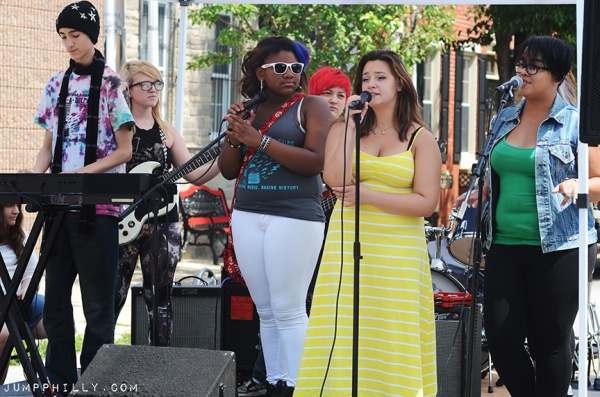[vc_row no_margin=”true” padding_top=”0px” padding_bottom=”0px” border=”none”][vc_column width=”1/1″]
Brandon W. on: Queen’s We are the Champions and Under Pressure
[/vc_column][/vc_row][vc_row no_margin=”true” padding_top=”0px” padding_bottom=”0px” border=”none”][vc_column width=”1/3″]

[/vc_column][vc_column width=”2/3″]
I will be speaking about the fantastic inspirational band: Queen. Right off the bat, I would like to explain that Queen is one of my top five favorite bands in history.
First off, the song we listened to was We are the Champions. I loved this song; I always have. The song has a meaning, well you know, other than the music, instruments, vocals and the rest of the structure a normal song. We are the Champions has a very strong meaning. It’s pretty much saying he’s been through a lot of what usual people have to face, but he’s not going to give up. He’s a champion and is definitely making it known, no matter how much you push him down he is going to LEAP back up bigger and badder with more and more followers. Till eventually, he pushes you down and you lose. Freddie Mercury was a lot of things, but one thing he wasn’t was a quitter. And, he made it known through this song.
Back to the song structure: I love how it starts off dull and slow and picks up and BOOM, hits your ears like a majestic leprechaun riding a Pegasus, all the while singing We are the Champions. All and all, I love this song and it’s and amazing song from my perspective, it’s Queen’s most strong and powerful song!
The second song we are musing about is Under Pressure. Now, even though this song is slow, it still has a pick-up and it even made me cry a bit. Now, every song has a meaning and yet I kind of only caught half the meaning of it. Ether way, it was still a good song to me.
I loved the rhythm to this song, it just makes you want to hum it, which is exactly what you want in a song. The lyrics are alright, but you know, it’s queen what are going to do? I loved how it picked up during the chorus, it was excellent yet dangerous. This is because when bands usually have that slow of a song and try to speed up the time signature it sounds horrible. However, what Queen did in this son was musical genius, and had such a feel to it that you have to like it. In conclusion, I liked this song. Not everyone does but who cares? I like it and that’s all that matters!
[/vc_column][/vc_row][vc_row no_margin=”true” padding_top=”0px” padding_bottom=”0px” border=”none”][vc_column width=”1/1″]
Sammy on: Nirvana and Kimmi Smiles
[/vc_column][/vc_row][vc_row no_margin=”true” padding_top=”0px” padding_bottom=”0px” border=”none”][vc_column width=”1/3″]

[/vc_column][vc_column width=”2/3″]
Nirvana:
The artist Kurt Cobain was someone who wasn’t afraid to be different, he is someone who did what he felt. As an inspiration to some younger generations, Cobain wasn’t afraid to write what he felt. In my opinion, Cobain is a man of vision, and a man who dared teens and others to be different – to be truly unique. This is why Cobain is an inspiration to young people. This is why he is an inspiration to me.
Kimmie Smiles:
When listening to Let it Go cover by Kimmie Smiles, I feel that she put a lot of emotion and energy into the song. When singing or even playing an instrument, you have to put energy into it. You want it to express yourself and let the music flow through you. It isn’t important if people are around you. What is important is you put your all into it, and Kimmie smiles accomplished this. So in the end just be you.
[/vc_column][/vc_row][vc_row no_margin=”true” padding_top=”0px” padding_bottom=”0px” border=”none”][vc_column width=”1/1″]
Gerry “King of the Dinosaurs” on: Comparisions between Ahmir and Kimmi Smiles covers of Let it Go
[/vc_column][/vc_row][vc_row no_margin=”true” padding_top=”0px” padding_bottom=”0px” border=”none”][vc_column width=”1/3″]

[/vc_column][vc_column width=”2/3″]
The Ahmir version of Let it Go makes me get somewhat emotional due to its soft nature and blending harmonies. The Kimmi Smiles version, however, makes me feel energetic and want to get up and rock out! Also, I like the unique style of rock Kimmi does.
Honestly, I do not like how the Ahmir version uses so much auto-tune; The song just doesn’t sound right without 100 percent pure human voice. I also like how Kimmi Smiles is very sped up. Even though the song was written to be sung slow, she did a very good job of transforming it.
Now to get to the lyrics of the song: To me, Let it Go is about letting go of all your fears and just going for it! It’s a message that really says to forget about everything else and to be yourself, and to not care what anybody else thinks. I like the rock version because it better suits the theme of the song. Rock and Roll is all about losing control and doing whatever sounds right to you without caring about what other people are playing or whether people will like it or not.
In conclusion, both versions are great incarnations of the song. However, I personally prefer the rock version because I feel it best captures the essence of the song.
[/vc_column][/vc_row]





 [/vc_column][vc_column width=”2/3″]
[/vc_column][vc_column width=”2/3″] [/vc_column][vc_column width=”2/3″]
[/vc_column][vc_column width=”2/3″] [/vc_column][vc_column width=”2/3″]
[/vc_column][vc_column width=”2/3″]




